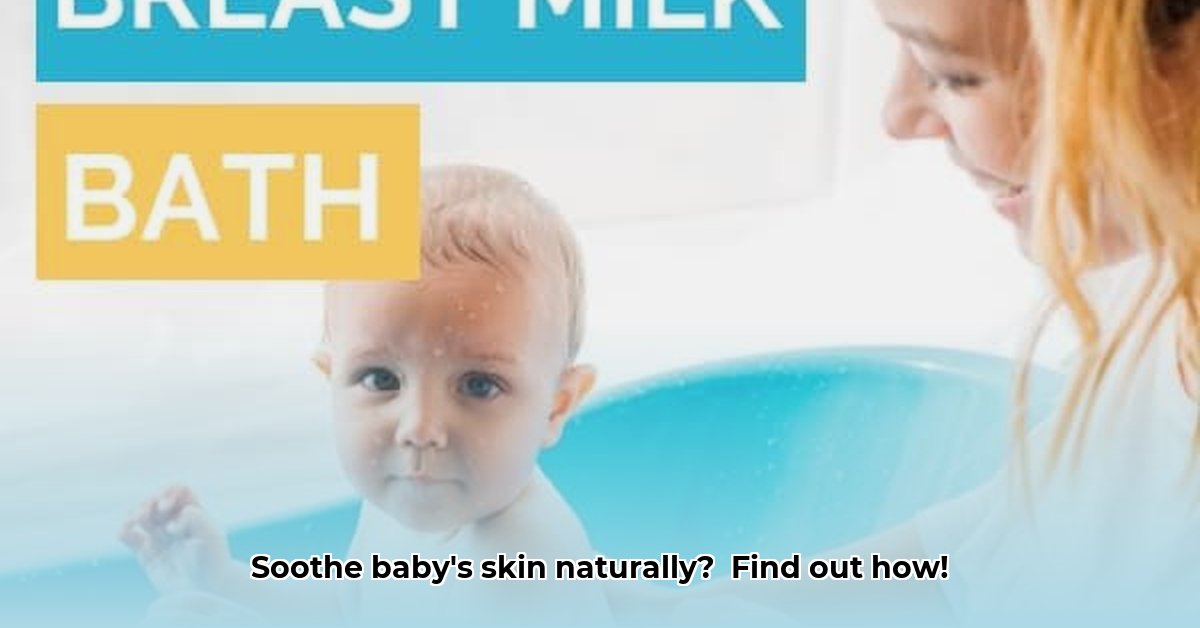
Benefits of a Breast Milk Bath
Dealing with a fussy baby with dry or irritated skin is challenging. Breast milk baths offer a natural, gentle approach to soothing your little one's discomfort. But are they truly effective and safe? This article provides a balanced view of breast milk baths, exploring potential benefits, safe application, and when to consult a pediatrician.
Why Breast Milk Might Be Beneficial for Baby's Skin
Breast milk is more than nourishment; it's a natural skincare solution. It's rich in components that may benefit your baby's skin. For example, fatty acids like oleic, palmitic, and linoleic acids help moisturize and soften delicate skin. Antibodies, such as IgA, provide a natural defense against infections, while growth factors, such as epidermal growth factor (EGF), may promote healing and reduce inflammation. These components suggest potential benefits for common baby skin issues, making it an attractive option for many parents. However, more research is needed to definitively confirm the extent of these benefits. Isn't it fascinating how nature provides such potent remedies?
Understanding the Potential Benefits for Eczema
Many parents report that breast milk baths help soothe baby eczema (atopic dermatitis). While anecdotal evidence is promising, rigorous scientific studies are still needed to confirm the extent of this benefit. The anti-inflammatory and moisturizing properties of breast milk suggest it could be helpful, but always consult your pediatrician for an eczema treatment plan.
How to Give a Breast Milk Bath
Giving your baby a breast milk bath is surprisingly simple. Follow these steps for a safe and effective experience:
Gather Supplies: Collect freshly expressed breast milk (fresher is better!), lukewarm water (test it on your inner wrist; it should feel comfortably warm), a clean basin or tub, and soft, absorbent towels.
Prepare the Bath: Fill the basin or tub with lukewarm water.
Add the Milk: Gently add 1-4 ounces of breast milk, adjusting the amount based on the water volume. Start with a smaller amount and gradually add more as needed. There's no single "perfect" amount; you'll find what works best for your baby.
Baby's Bath Time: Gently submerge your baby for 5-10 minutes, ensuring their head remains above water and avoiding contact with their eyes and ears.
Rinsing (Optional): Rinsing is optional. If you choose to rinse, use lukewarm water.
Gentle Drying: Pat your baby dry with a soft towel.
Risks and Precautions
While generally safe, breast milk baths present some potential risks:
Bacterial Contamination: Improper storage or using old milk can lead to bacterial growth. Always use fresh breast milk and discard any leftover milk.
Allergic Reactions: Although rare, allergic reactions are possible. Watch for redness, itching, or rashes, and discontinue use immediately if any occur.
Limited Scientific Evidence: The benefits of breast milk baths are largely based on anecdotal evidence. More research is needed to confirm the full extent of these benefits.
Not a Miracle Cure: Breast milk baths shouldn't replace medical treatment for severe skin conditions. For persistent or worsening skin issues, always consult your pediatrician.
When to Consult a Doctor
Contact your pediatrician immediately if:
- Your baby's skin condition worsens or doesn't improve.
- You observe signs of infection, such as pus, increased redness, or fever.
- An allergic reaction occurs (rash, increased itching).
- You have any concerns about your baby's skin.
Conclusion
Breast milk baths can be a soothing and potentially beneficial addition to your baby's skincare routine. However, remember they are a complementary treatment, not a replacement for proper medical care. While the benefits are suggested, more research is needed to confirm their full extent definitively. Always consult your pediatrician before starting this home remedy and maintain open communication with them regarding your baby’s health. Remember, a proactive approach is always the best strategy for your little one's wellbeing.